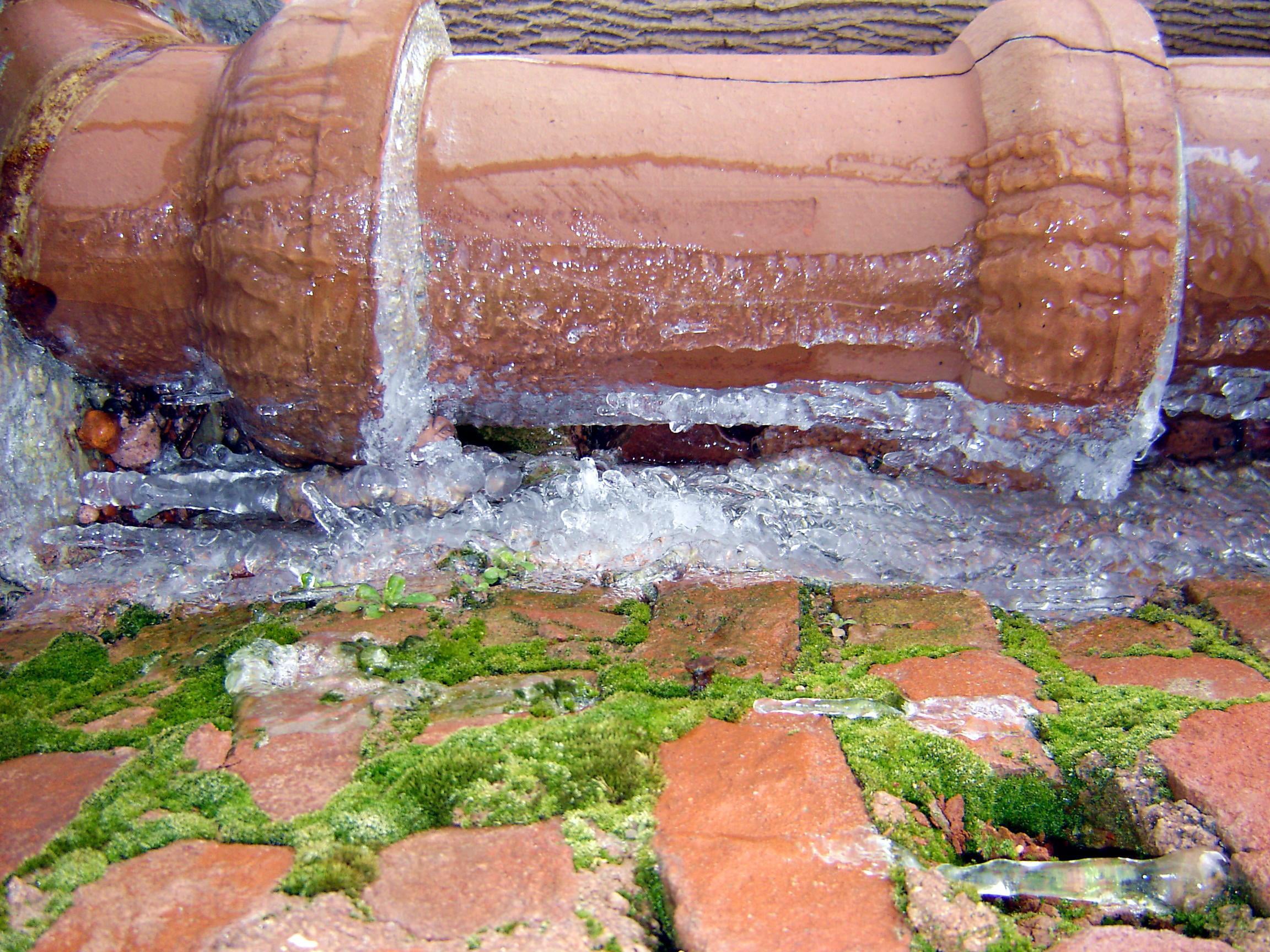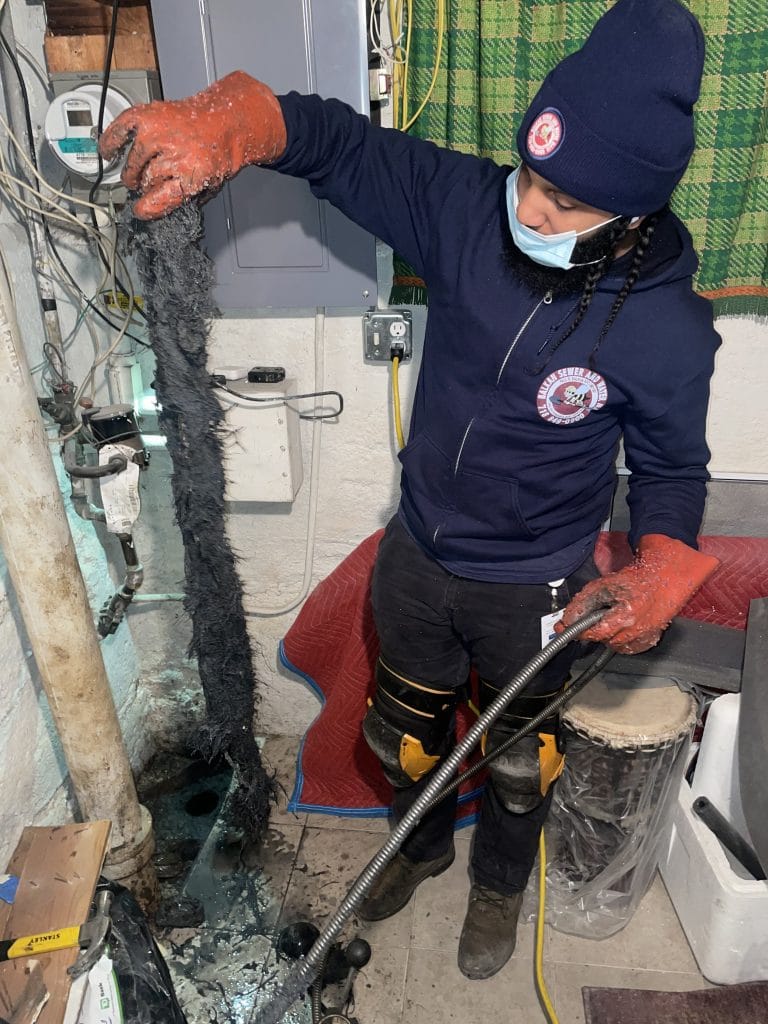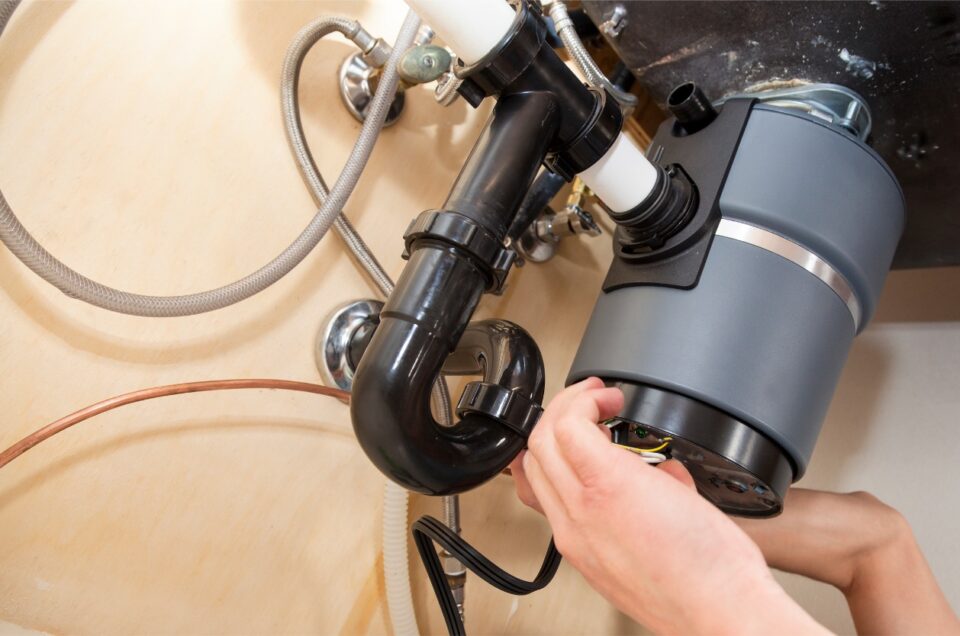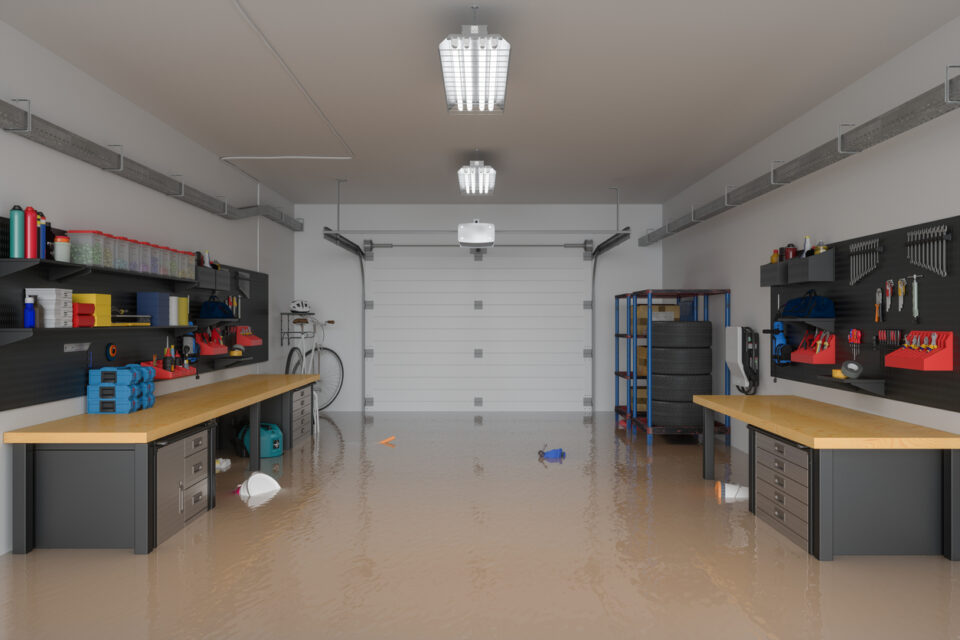A frozen sewer line or a sewer trap is not typically a common occurrence. But when it does occur, it can close down a drain system and cause a lot of inconvenience. We all know that when water freezes, it expands in volume. This is the reason why a frozen can of soda explodes when exposed to cold temperatures for a little while. The same thing happens with a sewer line or a sewer trap.
When water freezes in the pipe, it expands and either causes damage to your plumbing system or a stoppage.
Similar to a can of soda, the actual burst does not happen at the point where the water starts to freeze, but at the weakest point inside the drain system.
For instance, if a trap freezes the trap plugs may blow out. Pressure builds as the ice moves along inside a pipe. It continues to find a way to escape. If there is no way out, it will create its own by bursting through pipe walls.
There are typically three basic situations that would make a frozen sewer line possible:
- Poor pipe installation, and a lack of insulation.
- A sudden drop in temperature, and no water flow in an exposed drain pipe.
- Improper thermostat setting – insufficient heat inside a building.
Copper water lines and plastic pipes are susceptible to freezing when exposed to temperatures any lower than 32 degrees Fahrenheit. In an area where a warm climate is the norm, a frozen sewer line is an inevitable risk when cold temperatures strike. That is because the pipes are commonly located in an unprotected or non-insulated open area, or installed at a very shallow depth.
The portion of a sewer line installed indoors is also vulnerable to freezing in the following situations:
- The sewer line is routed to an unheated crawl space.
- Pipes that run through attics, alongside walls, or in unheated garages, especially when there are openings that allow cold air to flow across the pipe.
- No water is used for some time, as flowing water helps prevent freezing.
- A clogged gutter that drains into a sewer pipe; it dribbles extremely cold water slowly and causes eventual freezing.
- A plumbing system that has traps exposed to extreme cold will cause the water in the traps to freeze.
Why Is A Storm Sewer Line More Likely To Freeze?
Always remember that a storm sewer line is much more likely to freeze than a sanitary sewer line. A sanitary sewer line contains heated water and also receives heat from the public sanitary sewer system.
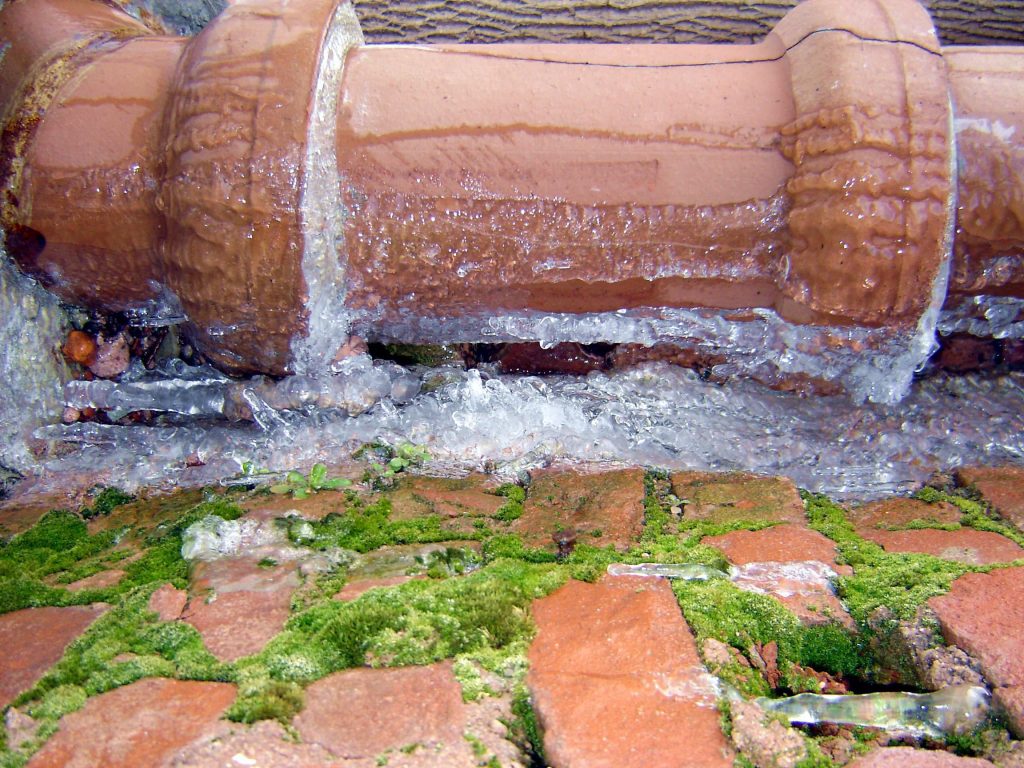
How to Prevent A Frozen Sewer Line
One of the most effective methods to prevent freezing drain pipes is to use insulation as the first line of defense against low temperatures, and pipes exposed to drafts. As a rule of thumb, thicker insulation is better, but typically household insulation will do the trick.
In an area where the temperature can drop far below 32 degrees Fahrenheit, more insulation is a stronger defense. Insulation is necessary for all pipes installed in unheated areas.
When a house is unoccupied, or little water is used, a sewer trap can freeze solid. A frozen sewer trap will stop any flow of wastewater. You will therefore have no use of your facilities.
How To Prevent A Frozen Drain Trap
An easy preventive measure is to pour about 1 quart of anti-freeze into each of your sewer traps. The anti-freeze will displace the existing water in the trap, and prevent a freeze up. Once you begin normal usage of your facilities, the anti-freeze will be flushed down your drain system.
Pipe insulation is commonly made of fiberglass or polyethylene. In the case of buried shallow pipes, horse hail felt is used because it resists being compressed. If using tubular insulation, make sure you take proper measurements of the pipe’s outside diameter, and purchase the correct size tube.
In case the pipes have frozen or been repaired (not replaced) at any time in the last 12 months, a careful inspection is advised since they are vulnerable to more extensive damage. Before installing insulation, you may want to wrap the pipes with heat tape to add an extra layer of protection.
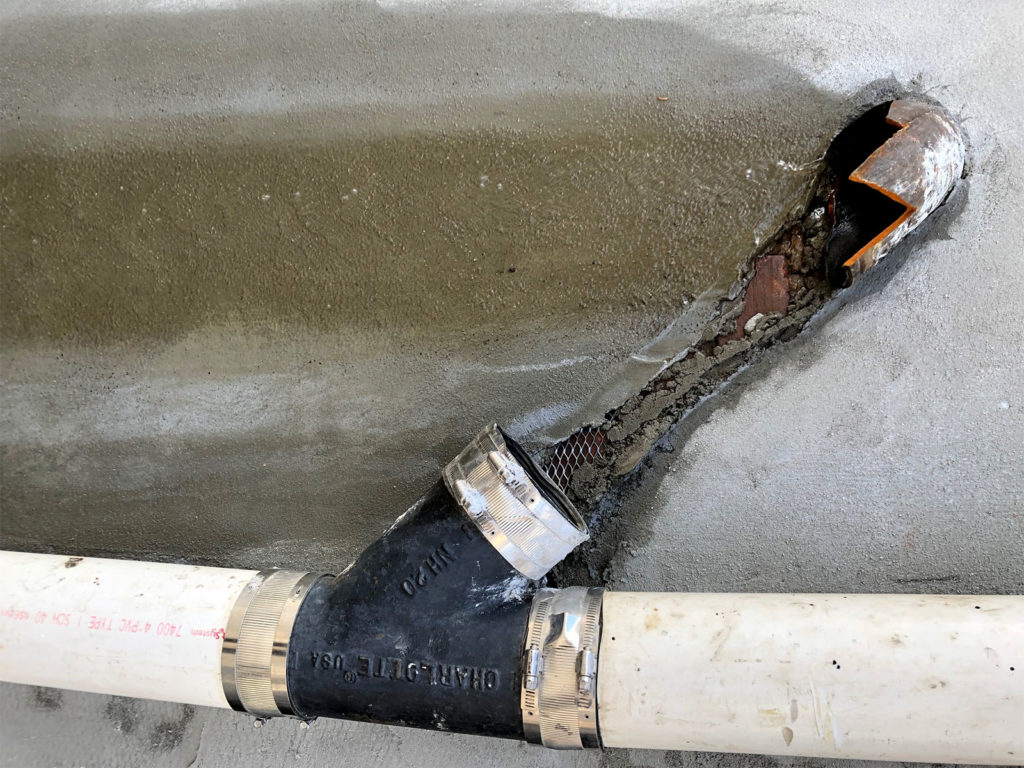
Even when the pipes are located indoors, a frozen sewer line is not impossible when the indoor area allows cold air to flow in. Crawl spaces have vents, so make sure you cover them with insulation, carpeting, or heavy-duty cardboard before winter comes. Access to those spaces must be sealed off, too.
Pipes Exposed To Basement Drafts
Your basement is insulated, but there can be small cracks along the outside wall. In such cases, filling the cracks with spray foam insulation and caulking will help to stop cold air from penetrating into the basement. Also, please check for the insulation in the garage and utility doors for any damage and make replacements if necessary.
Before sub-freezing weather hits, make sure to place covers on any pipe access pits. If pipes inside an access pit are shallow, place layers of insulation over them. Always remember to seal or caulk any open spaces that prove an opening for Arctic air.
As an emergency workaround when the weather forecast tells you to expect a drop of temperature, keep a faucet open to keep water flowing throughout your plumbing system. As we all know, moving water is much less likely to freeze.
How to Thaw Out a Frozen Sewer Line
With a frozen sewer line, it is impossible for wastewater to drain properly as solid ice blocks the way. This is certainly an inconvenience, but a frozen pipe can turn into a much more messy and unsanitary issue when the pipe cracks due to built-up pressure.
There are several easy methods to thaw a frozen sewer line by using everyday equipment, such as a space heater. When this happens, however, you should consider calling a professional to tackle the problem unless you know what you are doing.
The first thing to do is to find the exact frozen point of the frozen drain pipes in sewer line system. The most susceptible areas include an outdoor sewer access pit, basement, crawl spaces, and any room exposed to cold temperatures. If the frozen point is in the drain pipe, you must close all the faucets and stop using water. You may also need a bucket to contain all the wastewater that cannot flow freely due to the blockage.
If the frozen sewer line is accessible, one home method is to use a space heater. This may take hours, and blankets may also have to be used to direct the hot air and shield the pipe from the draft of cold air.
A second home method is to insert a length of garden hose into the sewer line. Make sure you use a hose with a smaller size than the inside diameter of the drain line.
When you cannot push the hose any further, the hose has probably reached the blockage. Raise your end of the hose and feed hot water into the hose by using a funnel. You can use a kettle or any hot water container that has a small enough spout to prevent water from overflowing the funnel.
The above method makes sure that hot water does reach the problem area. Please remember that it may take a while for the ice to melt; in the meantime, hot water will flow back, so prepare a bucket to catch the overflow.
Of course, a cure for a frozen sewer line does not prevent its re-occurrence. Determining the exact cause, and a permanent remedy is the answer. In some cases, a drain professional may be needed.
Why a Properly Installed Sewer Line Would Never Freeze
Proper installation can effectively prevent frozen sewer lines winter after winter. The first basic rule is to install the pipe at a depth below the frost line. In NYC that means deeper than 3′ deep. However different types of soils have different moisture levels as well, and therefore they will freeze to different depths.
Regardless, any drain line installed deeper than 3′ deep in NYC will not freeze unless it is exposed to some other random condition. A shallow sewer line, one installed less than 3′ deep, should take the following precautions:
- Encased in ready-mix concrete outside of the property line.
- Extremely shallow pipes inside a property line should be wrapped with hair-felt insulation. Compared to the more common household fiberglass insulation, hair felt has a better ability to withstand ground conditions because it does not compress. Fiberglass insulation compresses and loses its insulating properties, while hair felt is longer lasting.
- The separation between utility lines: between every utility line, there should be at least a one-foot distance. When closely located to a gas main, a sewer line is more susceptible to freezing. In some areas, however, this is not possible but proper insulation for each line can prevent the pipe from freezing, too.
- Plastic cover adds another layer of protection. A plastic cover is wrapped around the insulating materials to make them waterproof and longer lasting.

